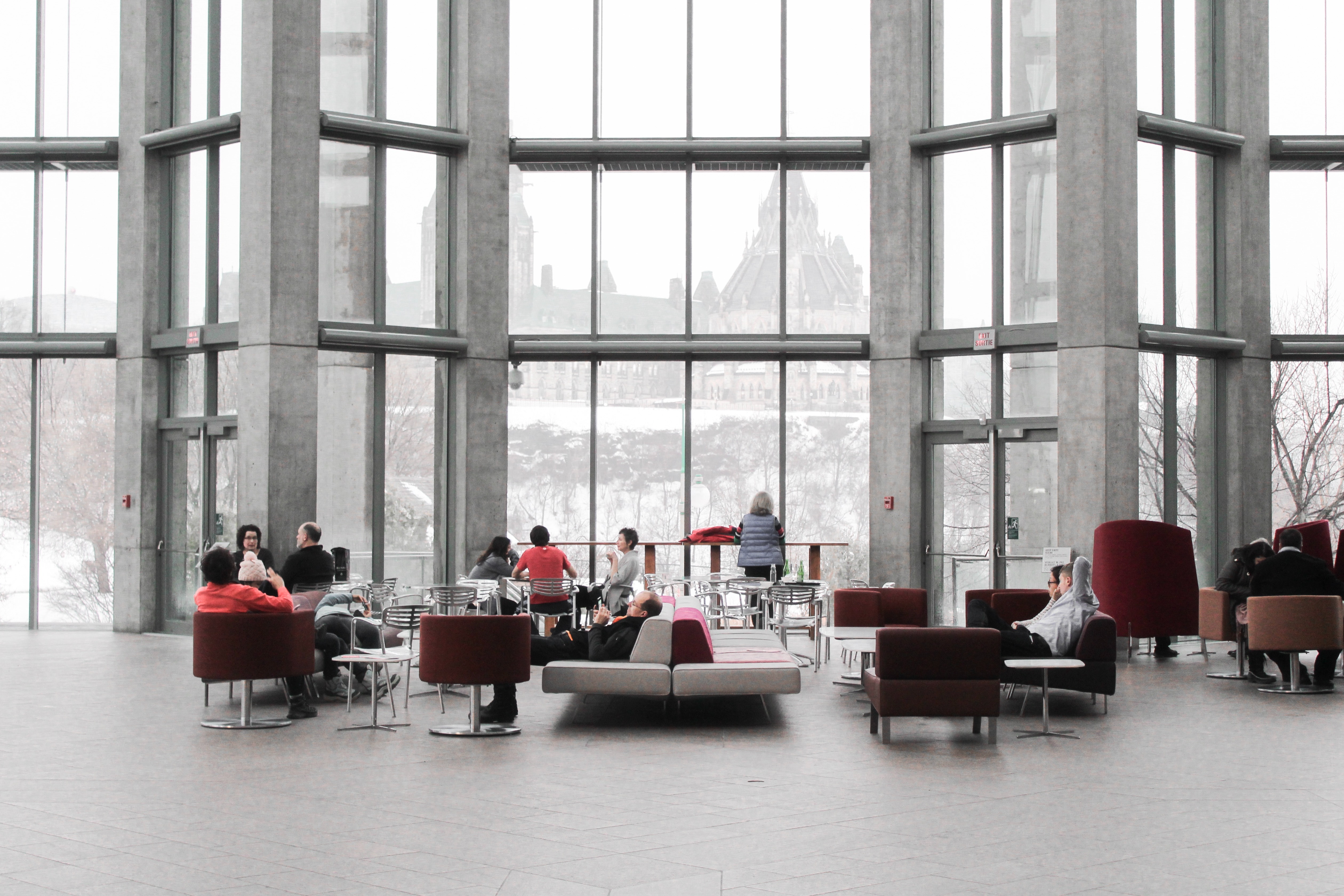
Building a culture of community in a hybrid workplace
Okta views community as the critical piece in the hybrid work puzzle. According to Armen Vartanian, Senior Vice President of Global Workplace Services at the company, while the data is still dirty – it’s clear to him that the future of work may be hybrid, but the key is fostering a sense of belonging.
The future of work has arrived. Here’s how to make it work for you.
Overview
Armen Vartarain is the Senior Vice President of Okta, and is leading their transition to a hybrid workplace model to offer equitability of workspaces to all employees, regardless of where they are based. Okta has recently moved to a dynamic work model which involves elements of hybrid work but more importantly, puts its employees at the heart of this program.
NB: some responses have been edited for brevity and clarity.
How have the events of the past two years influenced your workplace strategy?
Okta moved to a model that we dubbed dynamic work prior to the pandemic. We saw shifts in the demographics of the people we were hiring, emerging trends in cost-of-living imbalances, infrastructure issues tied to the urban environments where our offices are located, and an ongoing shift to cloud-based productivity technologies that were better than ever. Obviously, the gig economy provided momentum for people to have more flexibility in their lives, as well.
Where we’ve focused our efforts more recently is on health and safety. Part of this involves instituting protocols to support a cleaner environment. What’s been difficult is managing that at a local level, because different cities are experiencing different impacts of COVID at different times.
What additional challenges does the new way of working present?
I think about it in terms of equitability. A lot of organizations are now shifting their focus and philosophy around flexibility; they’re more open to having people work from home a certain number of days, hiring people in new markets, and so forth.
The challenge is going to be ensuring this new workplace model is effective for employees wherever they’re located. A truly flexible work model means folks are working from different time zones, from different locations, from offices, third spaces, service offices, from home. You have to create an equitable experience, one that keeps employees engaged, regardless of where they are.
What does this mean? It means thinking about how we share and disseminate information across the organization, how do we use various knowledge management tools to support asynchronous work. It means thinking about the benefits we’re providing our employees and creating flexibility around those benefits. What benefit package works best for employees at that stage in their career?
At Okta, we also really value face-to-face interactions as a way of supporting the sense of belonging and community. Relationships drive retention so we work hard to create those social interactions. Culture initiatives. Employee experience initiatives. Coming to the office isn’t just about productivity, it’s about relationships, it’s about community.
What are the key factors guiding your workforce planning decision-making?
The old model was disrupted so quickly, most people are still working through what it means and formulating their companies’ responses. For Okta, what we’ve seen in our data is that people still want to experience some form of physical experience in the office. The vast majority of our employees still want to come in between two and four days a week. Given that, and given the fact we’ve expanded our talent pool to the entire world and are more distributed than ever – sixty percent of our workforce is hired in markets where we don’t have physical offices – how we think about supporting them is by identifying critical masses of employees and locating offices in those markets. The objective over time is to create a network of offices that are smaller in size, but work better with the flexibility we’re committed to providing. The benefit of this smaller, nimbler footprint is that it makes it easier for employees in more places to come into “the office” periodically than it would have been historically.
Historically, prior to the pandemic, we had maybe thirty percent remote employees. We had employees whose commute was a five-hour flight! With a more distributed office network, the commute for nearly all of our employees, regardless of where they’re working, is now shorter, so you’re more likely to solve the challenge of bringing people together periodically and fostering that sense of community I mentioned earlier.
What are some of the risks you’ve considered in your approach to dynamic work?
I would say the risk factors we have to take into consideration are largely related to utilization. And while the data is a little dirty – we’re reimagining work in the middle of a pandemic, after all – what we do know is that we want people to be able to gather. We’re planning around how many employees we have in a given market, how many will be coming in on a set number of days, and what type of work they will be doing. These are the concerns that are set to drive our approach to flexibility and use of space.
We also know that we have to be proactive. We can’t just sit on the portfolio growth-minded companies like ourselves have historically utilized. There’s certainly risk associated with continuing doing buildouts across the world during such a turbulent time, but the bigger risk is doing nothing at all.
Tell us about some of the benefits of a hybrid workplace
A benefit of dynamic work is flexibility, but there’s a lot more to it than that. Think about the remote employee that has all of the flexibility in the world, but doesn’t feel engaged. That’s where this idea of community and relationship development comes into play. We have to demonstrate our commitment to our employees’ careers and provide them with opportunities to have a genuine sense of ownership. We have to give them pathways to accelerate their careers or even remake their careers by taking on different roles. Organizations have to think about that – their commitment to the individual needs of the employee – throughout the life cycle of their employment, from recruitment to offboarding.
What new thinking will be needed to fulfill your workplace strategy?
Roles are changing. Whereas historically, workplace executives were thought of as customer service types, I think people in my position are going to be thought of as more of a strategic partner within the C-suite. It used to be that the leadership would indicate it wanted to grow in specific market and the workplace team supported that plan with a corresponding real estate initiative Today, given the landscape of hiring and current attrition rates, given the emphasis on flex and hybrid, you have to be thinking about things more holistically. If you’re not thoughtful with your strategic approach, you’re setting your company up to fail.
It’s about the how and when of work, not just the where. People in my role need to be thinking about the technology they need to support communication and connection across Geographies, as well as what they’re using at their physical locations. They need to be thinking about mobile-first technology. Above all, they need to be intentional about creating the critical mass required to deliver on the need for community.
How are you solving for hybrid meetings with in-person and virtual attendees?
I get this question a lot. How can we accommodate an environment more conducive to hybrid meetings. The last thing most folks may remember about working from offices is a pretty poor video conferencing environment. Part of this had to do with need – the fact most people were at the office. You might be in a meeting with several folks and only one or two people would be dialing in.
Sixty percent of our workforce is remote now, and that balance is helping to create greater equitability in how meetings are held. At Okta, there are products from Zoom we’re testing. There are also changes we’ve discussed related to the structure of the meetings, leveraging the same technology we’re using move to a more asynchronous model of work, sharing agendas, documenting everything that happens in real time, so people feel like their voice is being heard, so they know the entire exchange is being captured, compared to the old model where you may not be hearing everything.
For more advice on how to develop a hybrid workplace strategy that works for your business, contact us enterprise@liquidspace.com or visit LiquidSpace.com/Enterprise.
Ready to continue your journey?
There are two great ways to do it.
Ready to continue your journey?
There are two great ways to do it.






